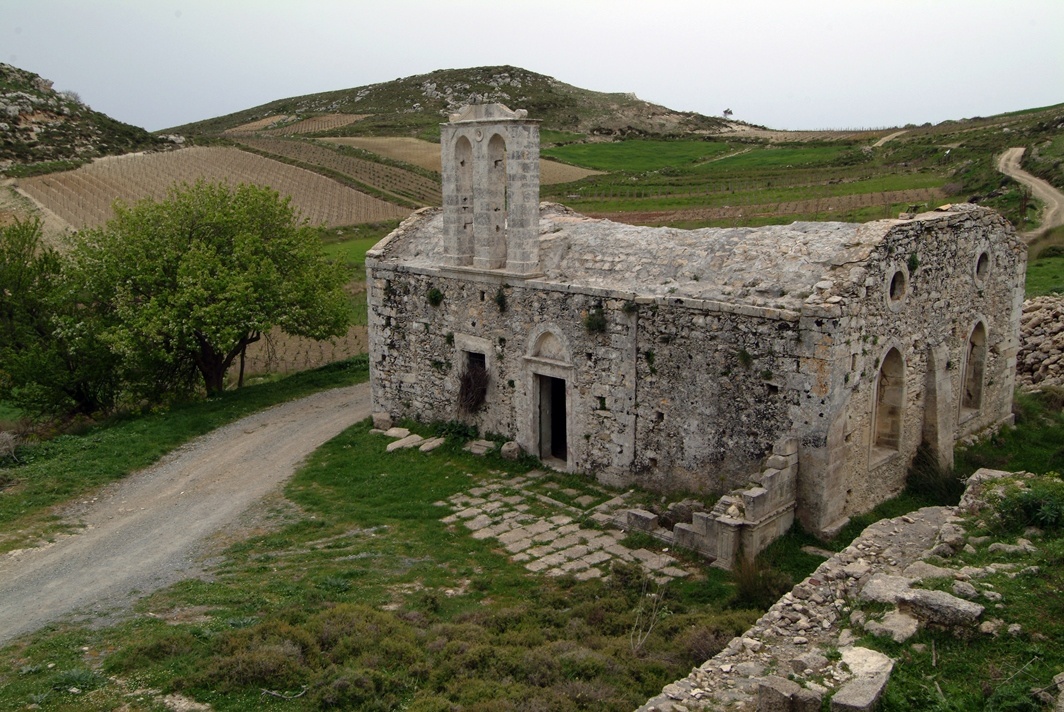
The fertile land of this village has always been and still is the source of income of its residents, who grow vines and olive trees and produce great quantities of olive oil and wine; this is reflected in the numerous olive presses and wineries in the broader region.
It is believed that the name of the village comes from Alagonia, a nymph, daughter of Zeus and Europe; her temple used to stand on the Tholoi (Vaults) rise, where, according to evidence, its ruins are still discernible.
To the east of the village there is Rouma location (‘rouma’ is the current of a river in the Cretan dialect), which used to be full of oak trees and pines; it was deserted due to the plague, but its residents were saved and settled at Alagni. At the old location there is a church dedicated to the Madonna of the Rouma (Panagia tou Roumatos). However, according to the census of 1630 a separate village named Rouma used to exist. During the church restoration, various old holy utensils were found.
At the top of the hill west of Alagni, affording a panoramic view, stands a small fortress of the late Venetian Period; this is the Fortress of the Vaults (Frourion Tholon), built around the 16th-17th century.
At the foot of the Vaults Hill (Lofos ton Tholon), there is the two-aisled church of Agion Apostolon (St. Apostles), built in the 15th – 16th century, bearing the coat of arms of the Venetian Cornaro family. At the church there are two ‘arcosolia’ (arched tombs), one within and one outside, bearing the date ΑΧΙΔ (1614). The patron saint of the village is St. Blaise (Agios Vlasis), whose church has noteworthy murals. Besides this, there are also other churches with murals worth visiting, namely the church of the Soter (Saviour) and that of Agiou Georgiou (St. George).
Very close to the hamlet, ruins of a Minoan farmhouse have been located; in the Koursamos, Petras and Karaoula districts, ancient stomping vat complexes have been found and explored, dating from the 14th to the 17th centuries and indicating how significant the area was for wine production.



